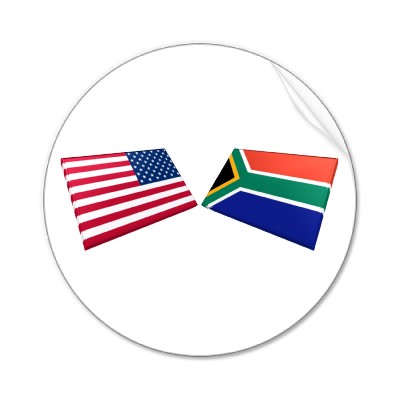 The year of Africa’s first World Cup is coming to an end. Tomorrow I am headed to Cape Town with my family for the South Africa – United States match at Green Point stadium. It’s a friendly branded as the Nelson Mandela Challenge — all proceeds go to the Mandela Children’s Fund.
The year of Africa’s first World Cup is coming to an end. Tomorrow I am headed to Cape Town with my family for the South Africa – United States match at Green Point stadium. It’s a friendly branded as the Nelson Mandela Challenge — all proceeds go to the Mandela Children’s Fund.
A couple of days ago Rodney Reiners of the Cape Argus contacted me and Anders Kelto, an American reporter and former Under-17 US national team captain, for some insights on American soccer to share with South African readers in the build-up to the match. Here’s the interview in full:
Rodney Reiners: What should South Africans know about the establishment and rise of the MLS?
PA: Major League Soccer is a legacy of the 1994 World Cup. It kicked off in 1996 and marked the resurrection of professional soccer in the USA after the demise of the North American Soccer League in 1985. (There were some other attempts at pro soccer in between the NASL and MLS but nothing terribly noteworthy.) I was at the first final at Foxboro Stadium in ’96 with 30,000 mad people in a torrential rain of biblical proportions. It ended 3-2 on a golden goal for DC United: incredible stuff. This league, it seemed to me, was going places. The NASL’s collapse a decade earlier influenced the MLS’s decision to have centralized ownership of player contracts (that is, the league owns contracts not the clubs); to not over-expand the number of teams (we now have 16); make the league more “American” and not overly dependent on over-the-hill foreign stars.
AK: And to prevent the kind of imbalances that doomed the NASL. The New York Cosmos bought the world’s most famous players and drew huge crowds, but just about every other team struggled on the field, and financially.
PA: That’s a very good point Anders. I should add that the commitment of several large corporate sponsors and multi-year TV contracts helped keep MLS afloat in the difficult early years and also legitimized it. Today, MLS competes with ice hockey as the best professional league in the country after The Big Three (NFL, MLB, NBA). That’s a significant achievement and it’s sustainable in the long term.
Author: Peter Alegi
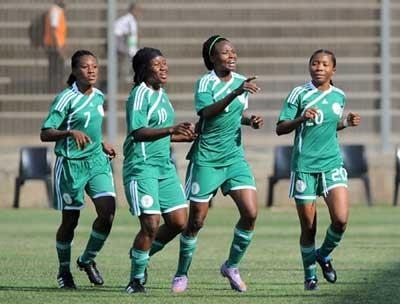
Nigeria 4, Equatorial Guinea 2. The Super Falcons are champions of Africa. The United Nations of Equatorial Guinea put up a good fight, but could not defend their title. Nigeria’s goals came from omniescent Perpetua Nkwocha and Ugochi Oparanozie, and from two own goals — one of them by Carolina, who also headed both of Equatorial Guinea’s goals.
It was 1-1 going into the final 15 minutes, but Nigeria got the job done when it mattered most. Oparanozie’s header made it 2-1 in the 76th minute and just three minutes later an own goal header by Noah Nkein put Nigeria ahead 3-1. Jade pulled one back in the 82nd before Carolina knocked the ball into her own net two minutes later. When the final whistle blew it was nice to see the 15,000 fans applauding the Super Falcons.
Perpetua Nkwocha won the Golden Boot (11 goals) and Stella Mbachu was awarded the Golden Ball for best player of the tournament. In the end, Nigeria dominated the African Women’s Championship and fully deserved their sixth continental crown in seven tries.
I enjoyed following the tournament and watching matches on TV. The women’s game in Africa is clearly progressing technically, tactically and physically. But much more needs to be done at the grassroots level in every country. Long-term growth and sustainable development require greater media attention and sponsorships, as well as support from male-dominated football associations and access to formal training from a young age. Until these components are put into place, expect Nigeria’s dynasty in African women’s football to continue long into the future.
Heartbreak for South Africa
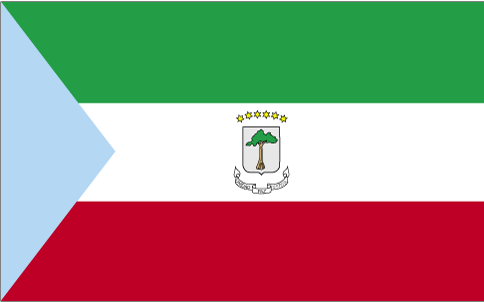
The biggest day in South African women’s football history ended in heartbreak as Equatorial Guinea defeated Banyana Banyana 3-1 after extra time on Thursday at a packed Sinaba stadium in Daveyton outside Johannesburg. After 90 minutes the score was 0-0.
The decisive moment came in the 103rd minute. Salimata Simpore capitalized on a defensive mistake by Van Wyk with a simple finish from just inside the box to give the defending champions a 1-0 lead they did not relinquish.
Psychologically shaken and physically tired, the hosts collapsed. In the 109th minute, a Banyana corner led to a breakaway by Equatorial Guinea that ended with a Jade cross being clumsily deflected by Dludlu inside the far post for an own goal that put the game away. As the deflated home crowd filed out of the stadium, Salimata collected a cross, and in one smooth move faked out a Banyana defender and the goalkeeper to slot home a third goal. Amanda Dlamini saved South Africa’s honor with a delicate chip over the keeper two minutes from time. Final score: 3-1 Equatorial Guinea.
The game had started with the defending champions in control, a fact reflected in their 60 per cent possession of the ball in the first twenty minutes. But the first chance fell to South Africa in the 14th minute when in-form striker Amanda Dlamini squandered the easiest of chances, shooting right at the goalkeeper from close range. Banyana gained confidence and territory in the latter part of the first half, largely thanks to Jafta’s domination of the midfield. Just before the break, Van Wyk’s free kick missile from 40 meters out (!) was tipped over the bar by Miriam. On the ensuing corner, Jafta turned and struck a wonderful shot from near the penalty spot, which forced a miraculous diving save from the Equatorial Guinea keeper. No score after a bruising first half. South Africa would come to rue the missed chances.
The second half was more guarded, neither side wanting to risk making a costly mistake. The Togolese referee seemed far too tolerant of rough tackling, with several players on both sides suffering injuries that required bandaging of heads as well as “holy water” treatment. Despite notching 56 percent of possession, Banyana were unable to penetrate, or seriously threaten the Equatorial Guinea defense anchored by Carolina. Then a turning point in the match: Augustine Makalakalane, South Africa’s coach, replaced Jafta with Makhabane, hoping to gain in creativity and attacking force. Instead the move backfired as Equatorial Guinea asserted control of the midfield. The best chances in the final twenty minutes fell to Chinasa Okoro and Salimata, with goalkeeper Mndaweni doing well to stop them in one-on-one situations.
Dlamini almost won it for South Africa on the stroke of 90 minutes with a high shot to the near post that Miriam parried away for a corner. As we readied ourselves for extra time, Salimata broke away from her marker down the right side but failed to deliver an easy pass to Chinasa for the simplest of tap-in goals. It was a sign of things to come.
Earlier in the day, news reports in South Africa had criticized Equatorial Guinea for quickly giving citizenship to players from Brazil, Cameroon, Ivory Coast, Nigeria, and Senegal. According to kickoff.com, Salimata even played in the AWC qualifiers for Ivory Coast! Cameroon lodged an official protest about Salimata in the group stage, but CAF appears uninterested in pursuing the case.
So Equatorial Guinea and Nigeria — 5-1 winners over Cameroon in the other semifinal — will represent Africa at 2011 Women’s World Cup in Germany. The African champion will be determined on Sunday.
Can Anyone Stop Nigeria?
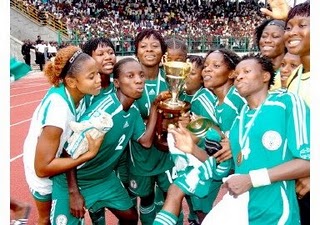
Three victories by a combined score of 10-1 so far in the 2010 African Women’s Championship make Nigeria’s Super Falcons heavy favorites to claim the continental crown.
Led by superstar striker Perpetua Nkwocha’s seven goals, the Super Falcons face Cameroon in tomorrow’s first semifinal. (This match kicks off at 10am. Brunch at Sinaba stadium anyone?). These two West African rivals — in men’s and women’s football — have met in each of the last three AWC tournaments, with Cameroon losing three times (once on penalties) and drawing once. In the 2004 final in South Africa, Cameroon were humiliated by Nigeria 5-0, with Nkwocha scoring four goals. Not a good omen for The Indomitable Lionesses.
South Africa and Equatorial Guinea meet in the second semifinal (3:30pm start, thankfully). This is a rematch of the 2008 title game won by the small oil-rich nation by a score of 2-1. Neither team has played their best football yet so this is likely going to be a riveting contest. Local media have been giving Banyana Banyana unprecedented coverage. The sportive nationalism of the crowds at Sinaba stadium has boosted the confidence, if not the performance, of the South Africans and may well prove decisive against the defending champions.
Prediction: South Africa and Nigeria meet in the final on Sunday.
South Africa through to AWC semis
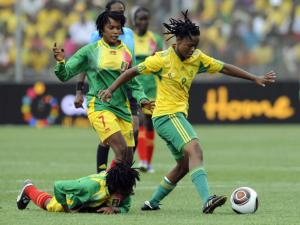
Another packed house at Sinaba Stadium was on hand to support Banyana Banyana in the last match of the group stage of the 2010 African Women’s Championship. Needing only a draw to qualify for the semifinals, South Africa defeated Mali 4-0 to take second place in the group behind Nigeria (3-0 winners over Tanzania). South Africa are one win away from qualifying for the 2011 Women’s World Cup in Germany.
While the scoreline suggests a one-sided affair, Mali and South Africa battled it out fairly evenly for 75 minutes. Ayanda Dlamini, making her first start of the tournament, put Banyana ahead with a nice header in the 32nd minute and it was 1-0 at the break.
The second half was marked by some rough and undisciplined play, with Mali earning four yellow cards and one red. As the West Africans grew more frustrated, Dlamini knocked in a loose ball from five yards out in the 77th minute to put the game beyond reach. Crisp finishing from substitute Seoposenwe (85th) and Sister (89th) then gave the 15,000 home fans more reasons to celebrate Banyana’s passage through to the semifinals. Their opponents will be decided tomorrow; probably Equatorial Guinea or Cameroon, although Ghana still have an outside chance.
Update: Click here to get access to AWC video highlights: http://www.supersport.com/football/african-women-champs/fixtures
Nigeria 2, South Africa 1
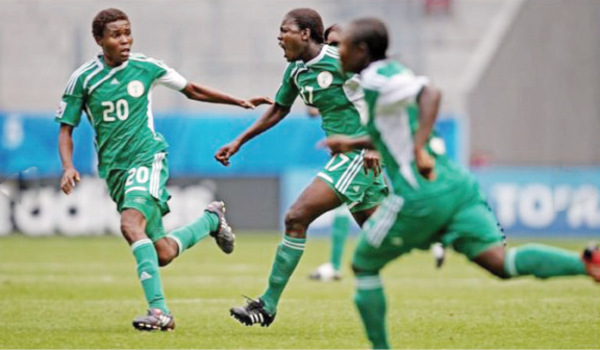
Perpetua Nwkocha was at her stellar best today, scoring two goals as Nigeria defeated South Africa 2-1 at Sinaba Stadium near Johannesburg. The three-time MVP of African Women’s Championships leads the tournament in scoring with five goals in two matches.
The contest was played in a relaxed atmosphere, nothing like the Battle of Vosloruus of 2000. The 15,000 capacity crowd — mostly young men — transformed the ground into a sea of yellow and gold. A small, vociferous group of Nigerian fans countered the vuvuzela cacophony with actual trumpets and drumming.
Banyana started tentatively, but hardly seemed a “desperate team,” as the Nigerian coach said in a pre-game interview. South African goalkeeper Thoko Mndaweni fumbled an easy shot six minutes in, and then failed to come out on a dangerous cross. The Super Falcons moved well on attack, dominating the middle of the park and exploiting their superior speed on the flanks.
Nigeria were rewarded in the 23rd minute, as Nwkocha smoothly finished a 1-on-1, courtesy of an Oji assist and lax marking. Nigeria continued to pile on the pressure, picking up corners and creating chances from their wing play.
Nwkocha made it 2-0 with a towering header off a corner in the 39th minute. Even the home crowd applauded the goal. Five minutes later, Banyana’s central defender Janine Van Wyk struck a thunderous free kick from 30 meters out to bring South Africa back into the game. The wonderful goal revived Banyana and the hopes of the partisan crowd. 2-1 at the halftime break.
I should note that Super Sport’s TV coverage was very good overall. Several cameras provided different angles, though not as many as in PSL (men’s pro) matches. The commentators were fairly solid. They showed respect for Nigeria, avoided condescending remarks, and relied on patriotic verve only a few times. A good sign for women’s football in South Africa and Africa.
As play resumed, South Africa discarded their long-ball approach but strikers Matlou and Popela remained too isolated and, therefore, ineffective.
Nigeria produced the first goalscoring chance of the second half in the 50th minute, before Banyana began to push the visitors back into their defensive half.
But the final twenty minutes saw Nigeria back in control as fatigue slowed Banyana down. The hosts created a last opportunity from a loose ball in the box in the 79th minute, but Nigeria calmly thwarted it. The Super Falcons came close to a third goal in added time and in the end deserved to take all three points from this entertaining and well-played match.
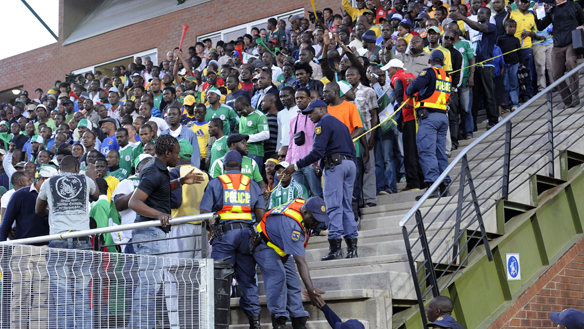
The stage is set for the most riveting match of the African Women’s Championship group stage. Tomorrow (November 4) South Africa take on perennial champions Nigeria. It is a battle between Africa’s powerhouses and fierce rivals. A decade ago, Banyana Banyana and the Super Falcons teams met in an ill-fated AWC final at Vosloorus Stadium, about an hour’s drive from this year’s venues.
On Saturday, November 25, 2000, at least 25,000 spectators packed into the modest Vosloorus stadium. A reporter in attendance described what happened (City Press, 26 November 2000, p. 1):
“The trouble started after unruly, hotheaded Banyana supporters exploded in anger and frustration when Nigeria got their second goal with 18 minutes left on the clock. Local fans considered the goal illegitimate. With Nigeria comfortably up 2-0 in defence of their title, the hotheads started to vent their anger at the assistant referee on the eastern side of the stadium by hurling an assortment of objects, including beer bottles and stones at her. The besieged assistant, in fear of her life, raised her flag to indicate her plight to Cameroonian referee Akono Ondo. Then she sprinted to the safety of the western side, where the other match officials were.
Shortly after this, more objects rained incessantly onto the pitch, clearly aimed at the Nigerians. The situation got further out of control when Nigerian supporters were forced to scurry in all directions in a death-defying scramble from the eastern stands.
Pandemonium broke out when South African and Nigerian fans began hurling abuse and anything they could lay their hands on, including rocks, shoes and umbrellas, at each other. The besieged fans made up largely of many children had to run helter-skelter to avoid the life-threatening stampede. Some of the children were seen tumbling from high up in the stands as the panic-stricken crowd ran in all directions.
The high tension was taken to breaking point by irate fans who constantly pelted the Nigerian players with an array of dangerous objects, thus preventing the match from restarting. Confused match officials, including Safa’s Oliphant and its general manager Dennis Mumble, appealed for calm in the stadium. [. . .]
Once it became evident the game would not resume under the hail of missiles, aimed mainly at the stunned Nigerian players, the embattled officials reluctantly abandoned the game, much to the delight of the Nigerians. As the victors merrily paraded around the field with their trophy, the anarchy and confusion spread to outside the stadium, where wayward fans fought pitched battles.
In the process, police reinforcements came under attack when their vehicles were stoned by a rampaging mob.”
South Africa’s widely celebrated hosting of the 2010 World Cup suggests that a repeat of the violence of 2000 is highly unlikely. However, rampant xenophobia and a 50 percent poverty rate provide kindling that can be ignited by the sparks of football passion and the game’s paradoxical quality to unite while it divides. Check back here for my match report of the Super Falcons – Banyana clash.